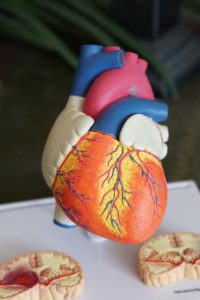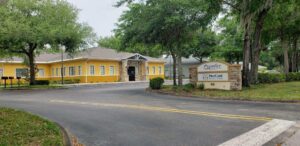Physical therapy is a very broad term. Speak to ProCare Health and Rehab Centers about physical therapy for injuries caused by a car accident. Today we will be discussing five different types of physical therapy specialties and who can benefit from them.
Because there are many specialty areas in physical therapy, we thought it was a good idea to explain a few of the most common specialties. It is well known throughout the field that there are different types, but this isn’t always common knowledge for the general public. Today’s blog will help you better understand which PT specialty area you need.
Orthopedic physical therapy:
According to Brett Sears of Very Well Health, for an injury or illness that affects your bones, joints, tendons, muscles, or ligaments, you are in need of orthopedic PT. This part of the body is referred to as the musculoskeletal system. Medical professionals specialize in specific areas of the body in order to give the most knowledgable and ideal treatment possible for each injury or condition.
Physical therapists specializing in orthopedic therapies provide care for bony and soft tissue structures of the body. Orthopedic injuries include fractures, muscle strains, ligament sprains, post-operative conditions, tendonitis, and bursitis. An injury to bones, joints, tendons, muscles, or ligaments can tremendously limit a person’s range of motion for recreational movement and work capabilities.
The goal of orthopedic physical therapy, similar to other physical therapies, is to increase strength, improve range of motion, and the body’s overall functional mobility. Of course, it is also to help an injury heal properly. After a sudden injury or surgery, a surgeon may give specific limitations to the patient that they must adhere to.
An orthopedic physical therapist can help anyone that has limited functional mobility as a result of damage to bony or soft tissue structures.
Geriatric physical therapy:
As the body goes through the natural process of aging, a geriatric physical therapist can help with the numerous issues that hinder people’s abilities. These issues include arthritis, osteoporosis, Alzheimer’s disease, cancers, hip and joint replacements, incontinence, and balance disorders.
Patients benefiting from or needing geriatric physical therapy may also be involved in cardiac rehab or neurological physical therapy. Geriatric physical therapists provide individualized programs to improve and restore mobility while reducing pain for increased fitness.
Neurological physical therapy:
 Neurological physical therapists can help individuals with neurological disorders or diseases. Examples of these types of disorders or diseases include ALS, Alzheimer’s disease, brain injury, multiple sclerosis, cerebral palsy, Parkinson’s disease, spinal cord injury, and stroke.
Neurological physical therapists can help individuals with neurological disorders or diseases. Examples of these types of disorders or diseases include ALS, Alzheimer’s disease, brain injury, multiple sclerosis, cerebral palsy, Parkinson’s disease, spinal cord injury, and stroke.
Patients who have been in a car accident and have suffered from an injury since then can greatly benefit from neurological PT. Some patients are not capable of recognizing they need this type of physical therapy. It is common for one physical therapist to recommend therapies of other specialty areas if they do not provide such therapies.
Patients with neurological disorders have problems such as paralysis and vision impairment. Effecting more than just the body, balance issues can cause people with neurological disorders or disease to have a major lack of independence. Often times, such patients need help walking which alters every day life.
Cardiovascular and pulmonary physical therapy:
 People with cardiopulmonary disorders and those who have had recent cardiac or pulmonary surgeries benefit from this specialty therapy. Cardiovascular and pulmonary physical therapy is a bit different from other physical therapies. Physical therapists do not stretch the muscle or area, use a laser therapy, or use other tools.
People with cardiopulmonary disorders and those who have had recent cardiac or pulmonary surgeries benefit from this specialty therapy. Cardiovascular and pulmonary physical therapy is a bit different from other physical therapies. Physical therapists do not stretch the muscle or area, use a laser therapy, or use other tools.
The primary goal of this specialty therapy is to increase patient endurance and functional independence. Patients who have suffered a heart attack, or multiple, may need to work with a cardiovascular pulmonary physical therapist in a cardiac rehab program.
Pediatric physical therapy:
The last type of physical therapy we will discuss is pediatric PT. This specialty is very interesting because physical therapists work in the early detection of health problems. They diagnose, treat, and manage problems in infants.
 The adolescents can have a variety of injuries, disorders, and diseases. Any of these issues can affect the bones, muscles, and joints. Basically, pediatric PT is for adolescents with just about any impairment or issue. Treatments can improve gross and fine motor skills, balance, coordination, strength, endurance, and cognitive and sensory issues.
The adolescents can have a variety of injuries, disorders, and diseases. Any of these issues can affect the bones, muscles, and joints. Basically, pediatric PT is for adolescents with just about any impairment or issue. Treatments can improve gross and fine motor skills, balance, coordination, strength, endurance, and cognitive and sensory issues.
According to Laura Inverarity, DO, children with developmental delays, cerebral palsy, spina bifida, and torticollis are examples of patients seen by pediatric physical therapists.
Learn more about all 18 specialities of PT at the website of the American Physical Therapy Association. Find the specialty that best suits your needs. Speak to ProCare Health and Rehab Centers for the best way to treat your car accident injuries with physical therapy and other medical attention!
Come back next week for more information, and have a great week. We hope you enjoyed the blog and will consider ProCare Health and Rehab Centers for your needs.
Staff Writer



